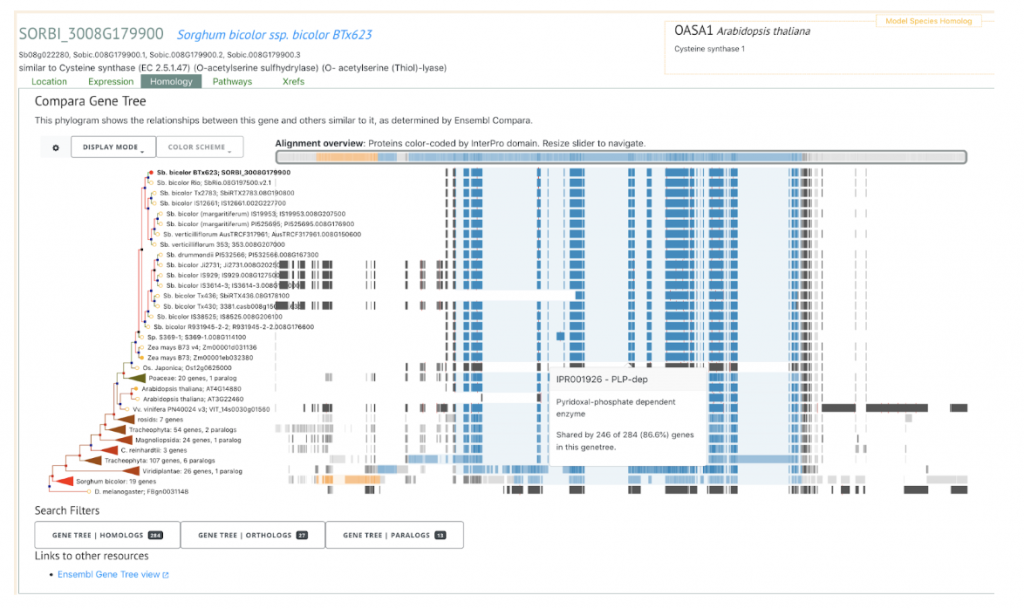The Epigenetics Behind the Adaptive Response of Sorghum to Phosphorus Deficiency
Sorghum, an important cereal crop used for fodder, forage, and food, is highly stress tolerant to conditions such as heat, drought, and high-salt exposure. Certain nutrients, like phosphorus, are critical for plant survival, and result in crop stress if their availability is limited. 30% of agricultural land world-wide is phosphorus deficient; adding further complications is the fact that phosphorus is one of the three main fertilizers in use, depleting global reserves. Genetically optimizing the acquisition and use of phosphorus in the sorghum germplasm will likely positively impact yield and reduce the necessity for adding phosphorus to nutrient depleted soil. Breeders, growers, and scientists are highly interested in genetically creating improved cultivars that will be even more stress resistant, require less maintenance, and result in superior output to feed a growing population in a changing climate.
Recent studies have been successful in elucidating the genetic contributions underpinning sorghum tolerance to low phosphorus conditions. However, there is little research into the environmental influence on the genetic response to limiting nutrient conditions, specifically the interplay of epigenetics and gene expression. In an effort to study the epigenetic contribution to nutrient response regulatory networks, researchers from Cold Spring Harbor Laboratory, the USDA, the Centre National de la Recherche Scientifique in France, University of Saskatchewan in Canada, and Embrapa Milho e Sorgo in Brazil investigated the results of limited phosphorous (LP) on transcriptomic, epigenetic, and regulatory network profiling of the root system architectures (RSA) in BTx623 sorghum. BTx623 sorghum plants were observed under LP and sufficient phosphorous (SP) conditions at 7 and 14 days after treatment. Despite being genetically identical, the difference in length, surface area and volume between LP and the SP-grown plants were an increase in the LP plants of 250%, 235%, and 224% respectively between day 7 and day 14. In addition, the two groups did not differ significantly in root diameter at day 7, but by day 14 the LP root diameter had decreased 14% and there was a significant difference in diameter between the two groups. The higher surface area to volume ratio achieved through generating finer roots appears to be of pivotal importance in efficient phosphorus acquisition.
The researchers evaluated the root transcriptome data and showed that gene expression had the most significant changes in the lateral root regions when compared with the primary root apical and subapical regions. A biological process ontology enrichment analysis indicates that specific hormone shunting is occurring in the root system resulting in auxin activation in the lateral roots and downregulation of auxin and ABA signaling in the root apex. DNA methylation and histone methylation (K4me3 and K27me3) levels in LP plants decreased in the TSS, five prime UTR, and transcript-encoding components of the gene compared to SP plants. Conversely, H3K4me3 levels increased in the intergenic space. Taken as a whole, the results suggest that histone methylation patterns may play an important role in an adaptive sorghum response to phosphorus deficiency. The study results show the potential mechanisms by which certain genes are influenced by the environment to produce a root system that is more efficient at phosphorus uptake as potential for use in generating crops with improved phosphorus use efficiency (PUE).
“This work reaffirms the importance of diversifying our agricultural system to adapt to environmental challenges as well as advancing our understanding the genetic, transcriptomic, and epigenetic profile of crops species to breed better germplasm for stakeholders and consumers.” – Gladman
SorghumBase Example:

Reference
Gladman N, Hufnagel B, Regulski M, Liu Z, Wang X, Chougule K, Kochian L, Magalhães J, Ware D. Sorghum root epigenetic landscape during limiting phosphorus conditions. Plant Direct. 2022 May 14;6(5):e393. PMID: 35600998. DOI: 10.1002/pld3.393. Read more
Related Project Websites:
Ware Lab: http://warelab.labsites.cshl.edu/


